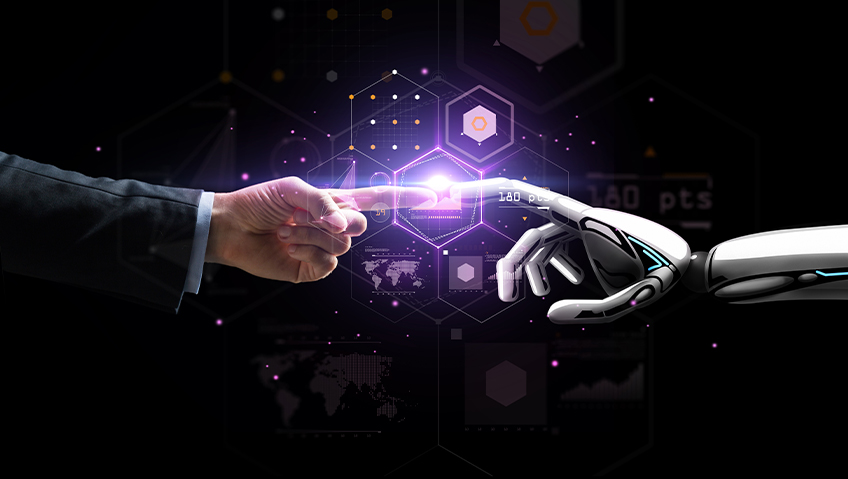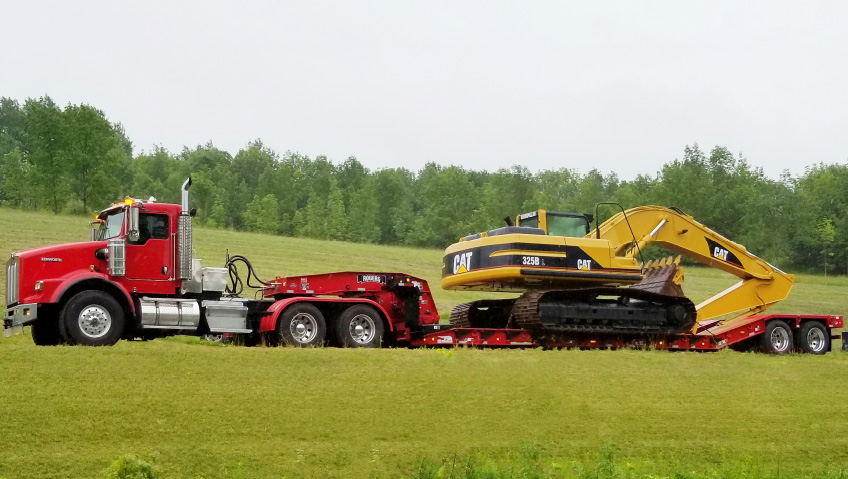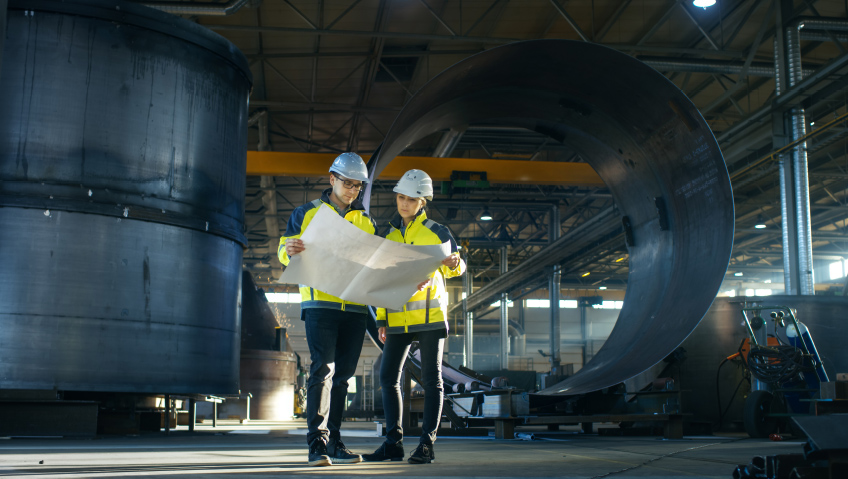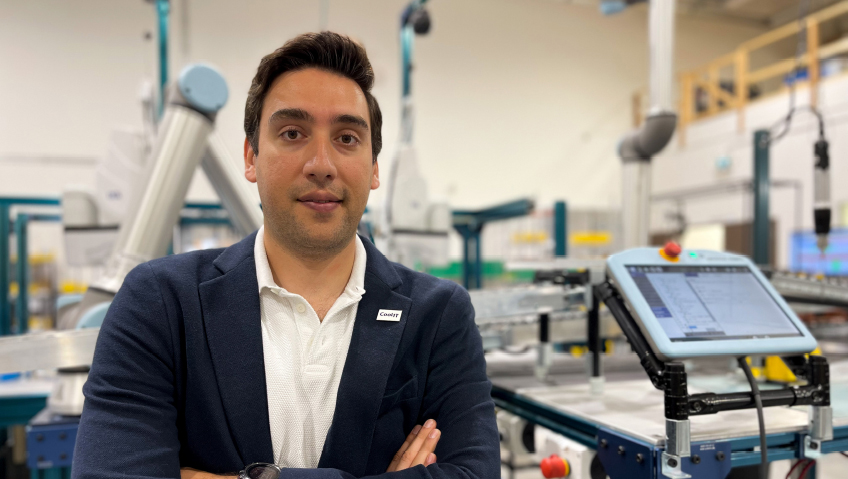Industrial robots have had their place in the manufacturing world for decades.
These first-generation industrial robots have traditionally performed work that is deemed dull, dirty, or dangerous. And the robots themselves present a level of danger, too, lacking senses that would alert them to approaching human counterparts. This meant that robots were largely relegated to functioning in a static location or inside a caged area on shop floors.
“What we’ve been dealing with so far is a robot that is fixed in place, so a person has to approach the robot in order to be exposed to its hazards,” says Carole Franklin, Director of Standards Development for the Robotics Industries Association.
Now we’re on the cusp of change. Advances in technology have produced collaborative robots, and industry is exploring the realities of strategic robot-human collaborations.
Robot becomes cobot
Collaborative robots, now better known as cobots, are becoming smaller, nimbler, and more intuitive thanks to advanced software.
Collaborative robots from Universal Robots in Denmark, a leading manufacturer in the cobot market, work side-by-side with their human colleagues performing precise and repetitive jobs. They can handle any processing task, from assembly to painting, screwdriving, polishing, and injection molding, and help companies large and small become more productive and competitive.
Quebec-based Omnirobotic develops autonomous robots that, among other things, precisely apply clear coat finishes to painted vehicles. ZenRobotics of Finland has served frontrunning recycling companies since 2007 with robots that intelligently and efficiently sort waste and help reach circular economy goals.
“Collaborative robot systems allow for partially automated tasks where the robot and human can both use their own strengths to the best effect,” says Franklin. “You have the strength, precision, endurance and repeatability of the robot, and you also benefit from the flexibility and sensitivity of human touch, as well as human problem-solving and creativity.”
Another example of cobots solving labour issues comes from Dynamic Group, a Ramsey, Minnesota-based injection molding business that currently uses five robots, three of which are collaborative robot systems.
“We have some jobs that just aren’t very fulfilling or attractive,” CEO and co-owner Joe McGillivray says. “They’re repetitive, boring – things no one really wants to do, no matter how much you’d be willing to pay them.”
His robot systems play a key role in production and revenues.
“I have work getting done on all shifts that wouldn’t be done otherwise,” says McGillivray. “The robots don’t quit, find a better job, or get sick. They’re able to keep going and going. People on the shop floor love them. They don’t want to be doing the jobs the robots are doing.”
Changing the atmosphere
Robots and AI powered technology are also combining to reduce greenhouse gas emissions by an estimated 2.4 gigatons by 2030. To visualize a gigaton of this gas, just imagine an area the size of Central Park in New York, 2.5 miles long and half a mile wide. Now imagine a structure filling that area and rising 100 stories into the air – that building approximately fills the space occupied by one gigaton of greenhouse gas.
This strikingly swift drop, says a report by PricewaterhouseCoopers and Microsoft, is the outcome of many sectors of the manufacturing industry deploying robots.
The damaging effects of climate change are on the agenda, with businesses looking to ‘green’ their operations and protect their own long-term interests. Technology, although a substantial upfront investment, is increasingly being called upon to offer solutions that reduce carbon outputs.
Good for people
It’s important to note that robots are not displacing human employees. AI is all about creating advantages and new skills for skilled trades, where engineers and technicians, for example, learn how to design and train robots to perform multiple tasks. The goal is to make their human coworkers more efficient so there’s less waste and higher productivity.
McKinsey Global Institute says the trend is for more workplaces to involve diverse forms of human-robot collaborations. Ideally, robots can take over mundane, round-the-clock, routine manufacturing tasks for precise, error-free outputs.
Deployment of robots to take on these tedious processes frees up people to focus on what humans are uniquely good at: complexities of management, exercise of creativity in production, and work-related interactions – all tasks that involve decision-making based on values.
“Robots are not going to replace humans. They are going to make their jobs much more humane. Difficult, demeaning, demanding, dangerous, dull – these are the jobs robots will be taking,” says Sabine Hauert, a UK scientist and cofounder of Robohub.org, a not-for-profit online communication platform connecting businesses with experts in robotics research.
For example, the rise of e-commerce has warehouse robots picking items off shelves and placing them in boxes for shipping. When new items are added to the stock, reprogramming a robot would require hand-labelling thousands of images to show it how to grasp and store the new items. Now MIT researchers have developed a training technique that enables a robot to learn a new pick-and-place task with only a handful of human examples, speeding up the entire training process.
Fitting in
Robots are not perfect and are still subject to the human error of those who program and install them. However, robot errors, in general, are predictable and systematic. These types of errors, unlike often intermittent human errors, are much easier to detect and resolve.
Economists say that robot technicians will be indispensable in the war against climate change as they will be called upon to not only implement but maintain robots at peak efficiency.
Right now, many of the incoming industrial robots are replacing aged manufacturing equipment. These more compact robotic machines require less power to operate, reducing energy consumption and pollutants. A fitting example of this is the robot replacement of the ubiquitous gas-powered forklift. Electric robot pickers can autonomously perform pick and pack operations quickly and cleanly.
Then factor in the COVID-19 pandemic that pushed digital transformation to the forefront. The use of delivery robots surged, in part because of the increased demand for home delivered goods, and in part because of human resource shortages as public health protocols urged workers to stay at home. Some of this expanded use of robot technology will undoubtedly stay in effect.
Another benefit is cities across the globe seeing the use of autonomous delivery robot vehicles which are lowering the emissions associated with transportation and could play an important part in reducing climate change.
The largest advantage, in terms of emissions, that autonomous robots have over traditional forms of delivery vehicles is their compact size. Electricity powers this smaller, lighter vehicle, not gasoline, and it requires far less power to do the same job. As well, it navigates using AI algorithms mapping out the most efficient routes to get to a destination.
Opening new opportunities
Robots and automation are greening manufacturing and the planet, putting them squarely on the frontlines of fighting climate change and pollution. The applications appear limitless. They are being deployed in the depths of the ocean to filter microplastics from the water and the food chain.
Robots are also aiding massive tree planting campaigns in remote regions. Australia-based SkyGrow is using its Growbot, an unmanned vehicle to plant trees 10 times faster and at half the cost of enlisting people to plant.
With AI and robotics evolving to create business and manufacturing solutions, they are dependent on the innovation and guidance of people.
As Andrew Ng, cofounder and lead of Google Brain sees it, “The amount of work we can automate with AI is vastly larger than before. As leaders, it is incumbent on all of us to make sure we are building a world in which every individual has an opportunity to thrive.”






